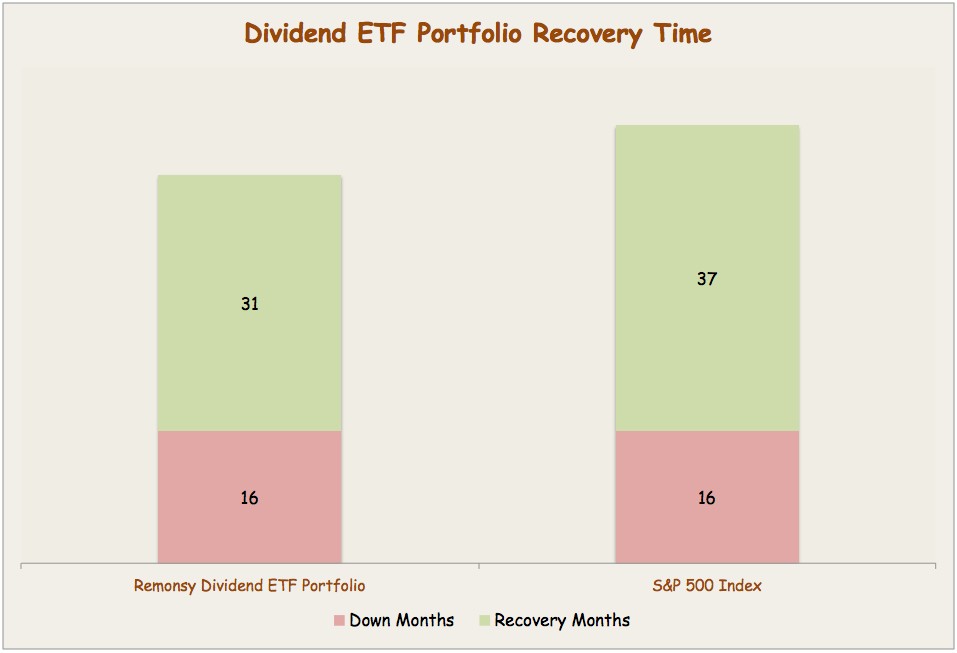The Best Way and the Right Time to Rebalance Your ETF Dividend Portfolio
Post on: 28 Март, 2015 No Comment

What are the best rebalancing portfolio strategies to rebalance your best ETF index funds? Opportunistic Rebalancing is the answer.
Asset allocation is more than a one-time occurrence as you need to maintain your chosen asset allocation portfolio. Each fund in your portfolio is likely to grow at different paces from the others. If left unattended, a portfolio will diverge from its original balance toward points that have more risk, less return, or both. This is known as portfolio drift. You need to be vigilant to make sure the balance remains in the proportions you had identified in your asset allocation construction.
Traditionally, portfolios are rebalanced back to their intended asset allocation quarterly, semi-annual, or annually to control portfolio drift.
Opportunistic rebalancing is a new methodology where you rebalance less frequently, but look more frequently to find the best opportunities to rebalance.
According to a study, by Gobind Daryanani, printed in the Journal of Financial Planning, in January 2008 titled Opportunistic Rebalancing: A New Paradigm for Wealth Managers, opportunistic rebalancing not only helps to control portfolio drift, but provides portfolio return improvements by capturing buy-low/sell-high opportunities as assets erratically move in different directions. According to the study, returns can be more than double compared with traditional annual rebalancing. These increased returns can only be accomplished by monitoring portfolios more frequently as these asset movements only occur sporadically.
Learn the 5 simple (and proven) principles for life-long investing success Download your FREE copy of Strategies for Better Investing: The Remonsy 5 Factor Investing Philosophy for Retirement Success and receive Remonsy ETF Monitor email newsletter—absolutely FREE.
Findings from the study:
- The optimal results were observed with 20 percent rebalancing bands around each holding. For example, a 30 percent position in your allocation can drift 20 percent up or down from 24 percent to 36 percent before the position is rebalanced.
- The position is rebalanced back to a 10 percent tolerance band. In the above example, the 30 percent position does not need to be rebalanced back to exactly 30 percent. It can be rebalanced back to a 10 percent tolerance range of 27 percent to 33 percent.
- The best rate of return was achieved by evaluating your portfolio every one to 10 trading days. This evaluation interval with the above tolerance bands produced a rate of return that was higher than all other rebalancing techniques studied.
- The study emphasized that you should look often, but you will trade infrequently with these wide trading bands. The study mentioned this twice.
- Trading costs were negligible due to the low number of trades.
- Results from the study corroborate prior findings that rebalancing return benefits are negative in trending up or down markets, but rebalancing provides positive return benefits in average and volatile markets. Rebalancing requires patients during trending markets. For example, in upward stock markets, you will be selling stocks only to watch them go higher and in downward stock markets, you will be buying stock only to watch them go lower. It takes a strong understanding of the longer-term studies, like this study, to have the confidence to proceed in these kinds of markets.
- Increase the number of uncorrelated asset classes used in portfolios. Uncorrelated assets move in different directions, which creates rebalancing opportunities.
- The reason rebalancing works relates to the concept that asset classes do not go up or down forever and, when they jump out of the rebalancing bands, you need to be ready for this opportunity before the asset class snaps back like a rubber band.
We rebalanced thousands of portfolios during a 26-year period of working with clients. We tried every possible type of rebalancing, and nothing in our experience matched the results of opportunistic rebalancing. Essentially, you will rebalance much less frequently, but at better times overall than with other rebalance methods. We strongly recommend this little-known technique.
Remonsy ETF Network exists to enhance your life-long investing success by providing independent and authoritative investment advice you can trust. Landmark academic financial studies, proprietary in-depth research and over a quarter century of real world financial advisory experience during good times and bad provide the foundation for our time-tested, proven investing guidance. And most important, we work only for you: We dont hold or manage your money. We dont earn trading commissions. And we dont take money from investment companies.














